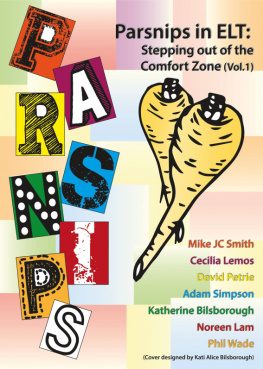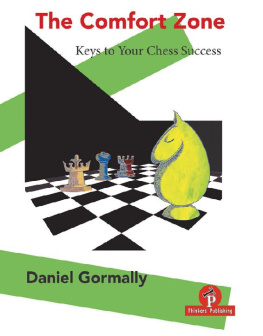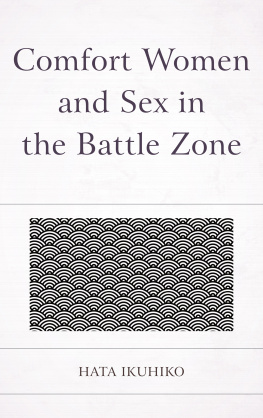Parsnips in ELT: Steppingout of the comfort zone (Vol. 1)
Written by MikeJC Smith, Cecilia Lemos, David Petrie, Adam Simpson, Katherine Bilsborough, Noreen Lam, Phil Wade andcover designed by Kati Alice Bilsborough.
CopyrightELTParsnipers 2015
SmashwordsEdition License Notes:
This free ebook may be copied,distributed, reposted, reprinted and shared, provided it appears inits entirety without alteration, and the reader is not charged toaccess it.
Check out theblog designed by Mike JC Smith at:
http://imagearies.com/wp-parsnips/
Foreword
Parsnips, it would seem, arefull of surprises.
Did you know, for instance, thattheir unique flavour comes when the starches change to sugar?Indeed, for centuries before sugar was widely available in Europe,parsnips were actually used to sweeten jams and cakes.
Lots of mythology and falsebeliefs surround this fascinating vegetable. People used to believethat eating parsnips would relieve a whole variety of ailments,from toothache right through to tired feet. Despite this, they area good source of nutrition when consumed in moderation, providingthose who eat them with a healthy dose of vitamin C, folate andmanganese.
Be wary, however; appearancescan be deceptive! While not directly related to the "cow parsnip,"which is a member of the parsley family, it's no coincidence thatthe parsnip resembles the carrot: these two vegetables are, afterall, close relatives. Whats more, those avid gardeners among youmay wish to cultivate the parsnip with extreme caution. This is anaggressive vegetable, which, when planted, can negatively affecthow other things, notably berries, grow in your gardens.
To those of us who garden in theclassroom, trying to help our learners grow and flourish, theparsnip has another meaning and provides an emotive acronym forPolitics, Alcohol, Religion, Sex, Narcotics, Isms and Pork whichcan add sauce to any lesson. Just as the root vegetable containsproperties that sweeten up things when added, so might theintroduction of the odd controversial PARSNIP topic add somethingdesirable to the mix in the language classroom. Similarly, not allthat is believed about the PARSNIP list is necessarily true. Thelist has been around a while, times have changed, the world hasbecome more homogenized and the topics therein may not be ascontroversial or untouchable as they once seemed.
Nevertheless, be wary ofappearances: these topics still arent simply ones that you canintroduce on a whim. As with the cook wanting to improve theflavour of their cooking, the odd parsnip might just liven thingsup in the way you want. Heed the gardeners warning and thinkcarefully, though: a carefully cultivated classroom environment canbe disrupted and even ruined by poor PARSNIP use.
We hope you enjoy the lessonscontained in this first volume of PARSNIP lessons; the intention isto give you a selection of plans that will add to the class, sothink about their suitability and breach the idea of using thesesubjects with the people who will be most affected by them: yourlearners.
Adam Simpson
August, 2015
TheParsnipers
Mike JC Smith(Australia) was in the RAAF for 16 years and moved into ESL/TESOLin 2001 focussing on aspects such as the impact of self-confidenceand the concepts of accuracy and fluency. With a background inmaths, science, engineering and web technology, he mainly teachesEnglish for academic, professional and vocational purposes. www.mikesmithteacher.com
Cecilia Lemos (Brazil) has beenteaching English for over 20 years. She is also a teacher trainerand materials writer. Her professional interests are mainly lessonobservation, assessment and feedback. She is currently a Directorof Studies at Cultura Inglesa in her hometown on Recife.
David Petrie(Portugal) is a teacher and teacher trainer with InternationalHouse, and a print and digital materials writer and consultant toELT publishers. His professional interests mainly lie in teachingexam classes and using technology in teaching, which he blogs aboutat: http://www.teflgeek.net/ .
Adam Simpson(Turkey) has been teaching in Istanbul for 15 years. His interestsinclude Dogme ELT and descriptive rather than prescriptivecurriculum design. He often forces his opinions on others atconferences and through his unfathomably popular blog: http://www.teachthemenglish.com/ .
Katherine Bilsborough (Spain) isa freelance ELT author. She doesnt have her own Blog or Websitebut she makes a habit of hijacking the Blogs of others. Sheco-curates the Free and Fair ELT page on Facebook. She can be foundat:
https://www.facebook.com/katherine.bilsborough .
Noreen Lam(Spain) is always looking to expand her horizons within the ELTworld, and is currently juggling university, in-company, YLteaching and whatever writing and editing opportunities come herway. She tries to encourage discussion and share resources withlanguage learners at www.facebook.com/EnglishWithNoreen .
Phil Wade(France) teaches English at university and in companies, writeselearning and is interested in engaging speaking lessons. He writesand blogs about ELT ebooks at www.eltebooks.wordpress.com .
Kati AliceBilsborough (Spain). After getting a Degree in Interior Design fromthe University of Vitoria (Basque Country), Kati decided to exploreother areas of design including Graphics, Web Design andIllustration. She is interested in all aspects of design in ICT andparticularly enjoys creating book covers. She can be foundat: https://www.facebook.com/kati.bilsborough .
PARSNIPS A sampler menu
Politics by Mike
Students first look at someinternet memes and identify some basic vocabulary related to a truepolitical news story. They then brainstorm a list of things thatpoliticians typically do to annoy the public. Students continue ingroups by speculating on the story behind the memes and sharingtheir ideas. Finally, they are given the background information tothe story so they can compare it with their own hypotheses. Thelesson finishes with a writing task in which students give theiropinions about politicians.
Alcohol by Ceci
This lesson starts by askinglearners to identify the same missing word (drink) from some commonexpressions. Students then think of situations when they would usethese expressions. They continue by working in groups to shareinformation about their own drinking habits and then in pairs tothink of advantages and disadvantages of drinking. Students come upwith a class list of pros and cons and finally choose the strongestargument for or against drinking and justify their choice.
Religion by David
The teacher elicits a range ofbeliefs from the students and gives the opportunity for some ofthese to be removed from the following debate. The students thenprepare reasons to believe in the ideas (or not to believe) andthen conduct an opposition debate, discussing each belief asdescribed and acting as a devils advocate towards each other. Thelesson ends with feedback on the content of the debate, feedback onthe emotional reactions it provoked and on the language used.
Sex by Adam
This lesson starts with a set ofstatements on the issue of homosexuality, before raising the notionof homophobia by presenting a series of scenarios that displayvarying degrees of prejudice. Learners finish off by debatingcultural norms and/or their personal feelings and what theyperceive as their cultural norms on homosexuality.
Narcotics by Katherine
Students knowledge about one ofthe most common recreational drugs, Cannabis, is elicited. It thenprovides an opportunity to find out facts about Cannabis and othercommon drugs. Students can access this information on their mobilephones if preferred. Students finish by writing fact files, sharinginformation and sharing their opinions in an informaldiscussion.










